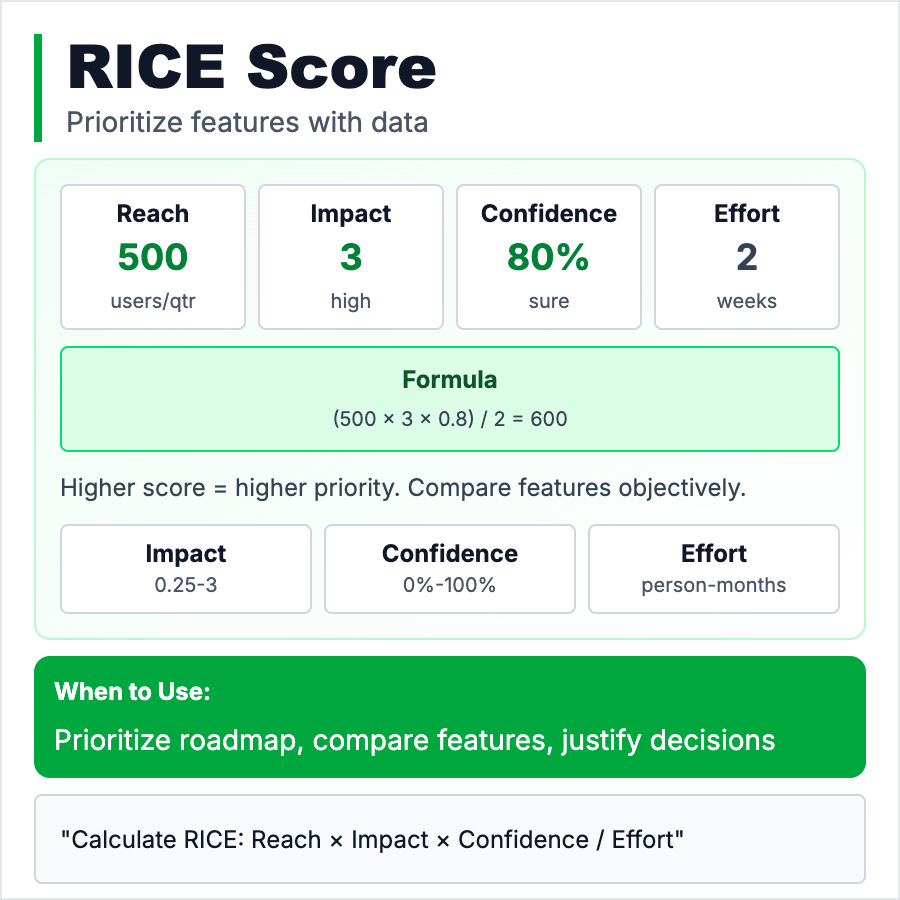
What is RICE Score?
RICE Score is a prioritization framework created by Intercom: Reach (how many users will this affect?), Impact (how much?), Confidence (how sure are we?), Effort (person-months to ship). Formula: (Reach × Impact × Confidence) ÷ Effort. Impact is scored (3=massive, 2=high, 1=medium, 0.5=low, 0.25=minimal). More rigorous than ICE because it accounts for how many users benefit.
When Should You Use This?
Use RICE when you need objective prioritization across different types of features (hard to compare "new feature" vs "redesign" without a framework), when stakeholders disagree, or when you want data-driven roadmaps. Best for teams with analytics to estimate Reach. Update scores quarterly. RICE works better for established products; ICE is faster for early-stage.
Common Mistakes to Avoid
- •Bad Reach estimates—use analytics, not guesses (e.g., "affects 40% of monthly users")
- •Not calibrating Impact—define what 3 vs 1 means for your team
- •Sandbagging Effort—engineering estimates should be realistic, not conservative
- •Forgetting hidden work—Effort should include design, QA, docs, not just eng time
- •Only using RICE—some strategic features don't score well but need to ship
Real-World Examples
- •Intercom example—Onboarding improvement: Reach=5000, Impact=2, Confidence=80%, Effort=2 = 4000
- •Low RICE—Custom enterprise feature: Reach=10, Impact=3, Confidence=100%, Effort=6 = 5
- •High RICE—Fix critical bug: Reach=10000, Impact=3, Confidence=100%, Effort=0.5 = 60000
- •Linear approach—They prefer ICE (simpler) over RICE for fast-moving small teams
Category
Product Management